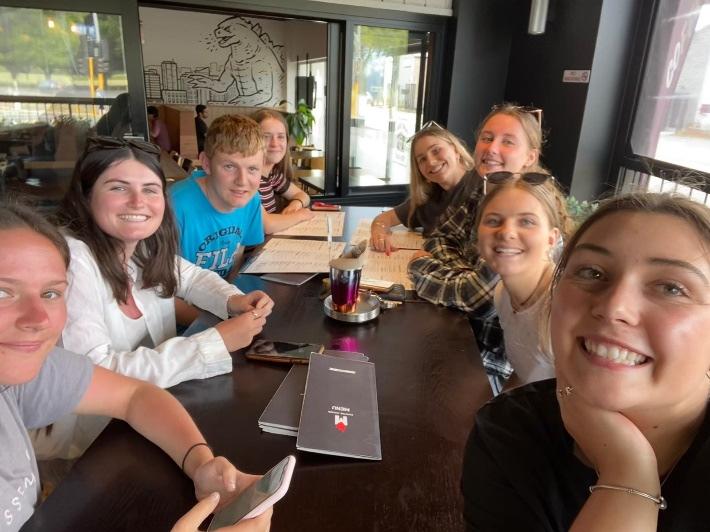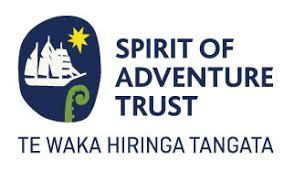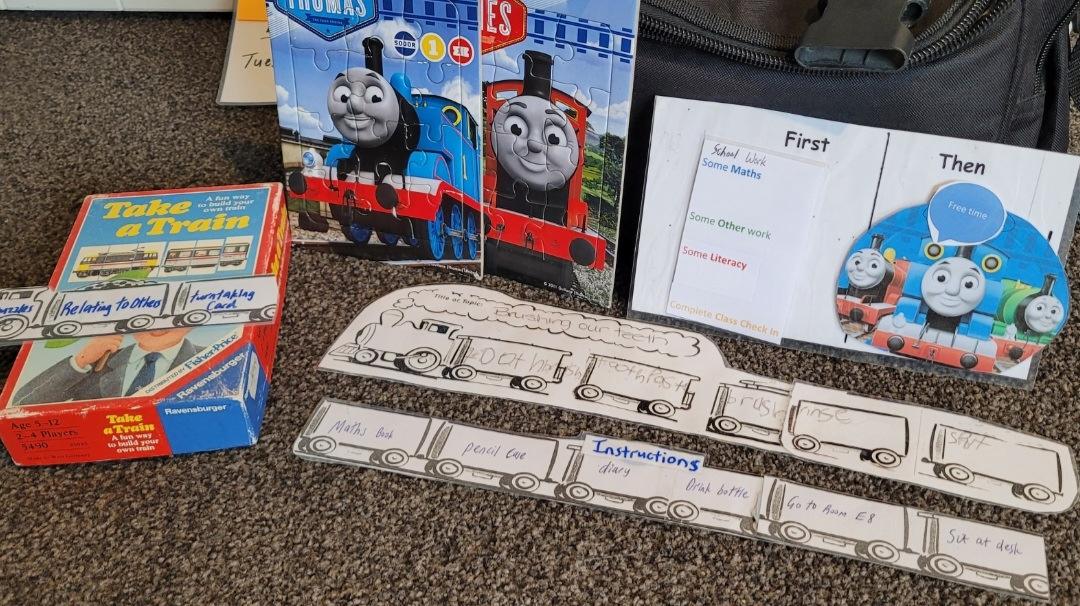What is in this book




What is transition ..........................................................page 2
Principles of transition and introducing myself... page 3
Hello my name is Nathan (all about me) ......................page 4



My strengths, interests and hobbies.............................page 5
If I feel worried and I need help................................page 6 - 7
My goals and dreams.....................................................page 8
What I am learning more about (and websites)............page 9
What I can do independently ......................................page 10
My Employability Skills ........................... page 11
My jobs and work ........................................................page 12
How to be a great Employee .......................................page 13
My job lists for New World and health and safety......page 14
My job lists for Deliveries ....................... page 15 - 16
My flatting jobs (things to remember) ........................page 17
Who I am working with (my champions)............ pages 18 - 20
Spirit of Advernture .............................. page 21

My calendar ...................................... page 22

Information to share with others
What helps me live my best life..................................... page 24
Tips for helping me live my best life (Strategies) page 25
Importance of strengths & interests ............................pages 26
Nathan’s interests..................................................pages 27 - 28
Emotional regulation .............................................pages 29 - 32
Transition Tips................................... page 33 - 34

How Employers can support Nathan............................. page 35
Executive Functioning Tip Sheet............................pages 36 - 37
Practical tips & resources ......................................pages 38 - 40
Resources......................................... pages 41 - 42
Sections
Important information for Nathan and readers.............. page 2
Important information and resources for readers... page 23
Why a good transition matters
We make many transitions in our lives. One of the most critical transitions is the move from school into adulthood.
For some students, particularly those with significant learning and social needs, the transition from school is probably the most crucial process for determining how the rest of their lives will unfold. Those supporting young people as they leave school have an obligation to ‘get it right’ and follow best practice. This includes:
allowing the young person to direct the process
involving parents, families and whānau
providing information on post-school options
transitioning being a coordinated and recognised process with schools, parents, students and agencies working in partnership.
What is transition?
A transition is a process, not a one-off event.
During transition an individual student receives support, through planning, to identify and achieve – or move closer – to their career and lifestyle aspirations. This planning is detailed in an Individual Career Plan which covers employment and financial independence, community participation, home and living arrangements, independent mobility, peer relationships, sexuality and self-esteem.
Source: National Transition Guidelines for students with additional learning needs – https://www.education.govt.nz

10 best practice principles of transition
There are 10 best practice principles that underpin successful transitions. They are supported by recent New Zealand research and international best evidence. These are summarised below and then translated into action points for educators.
1. The transition from school process should start by age 14 - at the latest. It is part of a specific planning process that aims to maximise academic achievement as well as functional life skills.
2. The student and their family/whānau drive the process.

3. Partnerships are developed between the school and community supports.
4. The transition plan is embedded in mainstream education and community settings.
5. The process identifies and overcomes barriers to the student’s learning and support.
6. The student and family/whānau are offered information and support that opens the door to a wide range of inclusive community-based options.
7. There is a clear distinction between the needs of the family/whānau and the needs of the student during transition.
8. Develop and practise functional life skills at home and in other natural settings.
9. From the age of 18 students with special needs should receive services in natural community settings.
10. Regularly evaluate the outcomes of the transition planning process.
Source: National Transition Guidelines for students with additional learning needs – https://www.education.govt.nz
Hello, my name is Nathan Carter and I am 20 years old.









This transition book is for you to learn about me and my amazing capabilities, strengths, success, dreams and goals for the future as I embark on my next big transition in life, leaving school.
I will share my goals and dreams for the future, what my interests are, what is important to me and all the things I can already do by myself.
This book is for me to help myself with things I can do and learn more, and for you to learn about me, not do things for me.
I have unlimited potential, the only barriers to what I can achieve is what those around me put on me.
I am a remarkable determine young man choosing my own goals in life.
I need people around me that are aware of how I learn and provide resources to support me to thrive.
Never put limits on what I can achieve, instead try to learn about my amazaing capabilities, strenghts, and unique learning style.


My strengths, interest, hobbies
Nathan Carter
Age: 20
Occupation: Library Volunteer
What people appreciate about me















I am friendly, cheerful, and motivating. I like to do things well and to be thorough with tasks.
I am honest and think in a logical way. I have excellent attention to detail and focus.
I have energy and enthusiasm and like to be tidy and organized.
I give back to my community by volunteering and have raised money for charities through running.
My Strengths

I have an exceptional focus and detailed memory
Maps (can give you directions anywhere in NZ and around the world)
Numbers/ letters, excellent memory with this (I’m great at shelving adult non-fiction)
I am friendly and kind and like to do things well (and a bit of a perfectionist)
I am a visual learner and thinker, and have an excellent visual memory of information
I thrive on structure, using checklists, am energetic and motivated

Driving, I have my full driver’s license, have good mapping skills and good attention to rules such as road rules enabled me to successfully get my license
I am a good runner and enjoy weekly trainings and entering races

I am honest and reliable with time (Excellent time keeping skills) and like to follow routines
Completing Duke of Edinburgh award (Bronze, Silver, Gold) Completing Gold 2022
Ways that people can help me reach my potential
Be a champion by encouraging me to build resilience, have opportunities for experiences, be patient, provide endless encouragement, and expose me to highly motivating experiences to bring out motivation and discipline. Support my strengths, develop trust and understanding for neurodiversity.
Alter the environment to support my strengths, abilities, growth, and development. Support me in ways that are meaningful, work in the context in how I think and learn, provide supports that set me up for success.
What to think about when things are different
Some things to think about
Be flexible and try different things:
o Remember sometimes things are different, and that is okay.
o Same Same, but Different, being flexible is a cool thing to do.
Is it a small problem or big problem? Can I fix it myself?
If things don’t work out sometimes, we can do them another time.

Check my diary, my daily timetable or blackboard.

If I feel worried and I need help
I can talk to
Mum 0220142790
Dad 0273856141
Debbie 0210307155
Nana 0272711255
Casey 0278456200
Cameron 0226921422
I can tell myself
I am feeling worried and that it is ok to feel worried. I can ask for help, I can think about things I like, I can focus on things I can do, I can check my calendar, I can write down what I am doing.
Being flexible and trying new things can be fun, I can get through this, I am safe and loved.
I can try these things to feel better
Talk about my worries with mum or dad or the people I trust
Write in my diary how I am feeling
Listen to music or sing a song
Look at maps
Find a quiet place to relax
Look at my phone
Send funny snapchats to my family and friends
Call my brother Cameron
Drink some water or have a snack
Ask myself, Is it a big problem or small problem?
I can try breathing taking big breaths in and out 10 times, or I can count to 10.
I can move my body by Going for a run
Bike ride
Walk
I can listen to Music Videos on my iPad
Feelings come and go
Its safe to feel my feelings
Don’t rush take it easy
I’m a useful Engine
I’m a brave Engine
My goals and dreams
Staying home alone overnight and doing the cooking, cleaning, locking the house and looking after the animals.
Texting and calling friends

Going out to places with friends, and choosing where to go.
Drama

Arts integrated
Volunteer library
Employment with my interests, driving, maps, sorting.
Doing more group activities
Cooking and grocery shopping by myself
Flatting and stay home on the weekends
Finish DOE Gold award
Go to the gold coast and run the half marathon, and go to the theme parks.

Socially speaking with Grace


Running races
Do fun stuff with Ella
Work with Carol and Jenny finding Employment.
Orienteering with Sally and other fun stuff


Mail room sorting the mail and go on the mail run with Nicola
Having fun with Grace, Rozlyn, Emily, Jenny, Carol, Debbie, Sally and Casey.
Go on hydroslides

Relationships, I would like a girlfriend





Fun family holidays and road trips.
Save money for my own flat.
What I am learning more about
Looking after my valuable belongings like my wallet and car keys.
Remembering to lock my car.
Planning all my meals for the week and writing a shopping list for the ingredients I need.
Organizing my weekends, holidays and trips and what I need to take with me.
Flatting and all the things I can do by myself.
Budgeting for the week, and paying bills, using my internet banking.
Make a booklet for flatting that helps me do everything by myself.
Learning skills for more employment

Relationships and making friends Be Your Best Academy - Skills for Life
Planning my week and things I need for each day
Remembering things I need for my daily activities, work, flatting, use my diary, blackboard, weekly calendar to help me remember.
Weekly jobs for flatting, cleaning the bathroom and toilet, writing a shopping list for groceries.
Call friends and family to have a chat
What I can do independently

Drive
Cook and do the dishes
Volunteer at the library

Go for runs
Do the washing

Get items from the shops
Go to the hairdresser

Text or call my family and friends

Go for bike rides
Go to my local swimming pool
Stay home alone overnight


Go to the fish n chip shop
Get money out of the eftpos machine



Fill my car up with petrol

SKILL
Positive attitude
My employability skills
EXAMPLES OF WHEN I’VE USED THIS SKILL
I am:
Enthusiastic, willing to work even when it’s difficult
Self-management
Turn up on time, well-prepared, don’t put myself or others at risk
Enthusiastic
A hard worker
Kind
Consistent
I can be:
Timely/organized
Prepared for a shift
Careful to follow health and safety instructions
Thinking skills
Figure out how to solve problems, think carefully about choices, ask for advice
I have:
Good attention to detail
Good mathematics skills
Good pattern recognition
I know:
When to ask for help
Communication
Listen well, talk and write clearly, ask if I don’t understand
Teamwork
Get on with everyone, do my part, support my workmates, respect my manager
Willingness to learn
Happy to learn new things, accept feedback on how to improve
Resilience
Able to keep going through hard times, able to ask for and accept help
I can:
Ask if I don't understand
Be friendly
Help others when they ask
I can:
Respect my manager
Do my part
I am:
Happy to learn new information
Enthusiastic to work
Able to change my performance based on feedback
I can:
Persist when a job is hard
Ask for and accept help
My jobs and work

New World, work experience
Mail Room

Library Volunteer

Salvation Army Rolleston Volunteer


Driving a lady to her appointments

Delivering boxes
Delivering papers
See Nathans Employment Folder for further resources and his CV















How to be a great employee

Be clean and tidy at work, wash hands before you start work.
Always try do your best and work really well.
Be at work on time, keep your area clean and tidy, and help others.

Let your Employer know if you cannot make it to work, or you are going to be late.
Know that you have many skills, and are good at many things.
Try hard to improve your skills, so you can always do a great job.
Try hard to find a job that showcases your interests, like, maps, Maths, organisation and structure, fitness.
Saying hello to the people you work with is a nice thing to do.
When It is time to go home, say goodbye to the people you work with.
My job lists for New World
1) Go to the stock room at the back of the store
2) Take your trolley and fill it with aisle 3 items e.g. canned goods, sauces, soups etc.
3) All labels face the front on the shelf.
4) Bring all stock to the front of so it can be seen on the shelf.
5) Check labels to make sure the product is in the right place.
6) Place dented stock and products back on the trolley.
7) Take rubbish, leftover stock and dented items back to the stock room.
8) Dented stock goes to the defect shelf, and leftover stock goes back on the shelf.
New World Task List Finished? Start again
I am not sure what do to?
I can fix the problem myself.
I can ask for help.
I can check my task list in my book or on the other side of this list.
I can check my New World work book.
I can check with Jenny; she can show me my task list.
There is a problem?
Is it a small problem or a big problem?
Is it different, being flexible is a good thing.
Do I need to tell Jenny there is a problem and show her.
Remember being an adult is about learning new things, doing things by myself, and checking how to do the job all by myself.
Yes I can do lots of things by myself!
My job lists for Deliveries






My flatting jobs (things to remember)


Cleaning the bathroom and toilet - 1 Day a week
Cooking and dishes – 5 Days a week
2 days a week takeaways or dinner at family or friends
Washing my clothes, hanging out and folding and putting away - Everyday
Change my sheets – Once a week
Grocery shopping – 1 Day a week
Budgeting - 1 Day a week
Checking my account and see I have enough money to pay the bills 1 day a week.
Bills I will need to pay will be petrol in my car, Grocery shopping, cafes and shopping for things I want.
Things to remember to do
Lock the house when I go out
Lock my car when I finish driving it
Call or text family when I go out
Lock the house when I go to bed
Who I am working with (my champions)
Rozlyn
0277383383
I can call or text Rozlyn to say hello and see what she is up to.


Do fun activities with Rozlyn
Cooking and flatting practice.
Debbie
0210307155
flatting practice
Run events together

Help, if Nathan gets stuck he can call her and say hello
Sally
Orienteering
fun activities
Cooking and flatting practice
Jenny

Work experience at New World
fun activities
Carol
0212456633
I can call Carol if I need help and want to say hello.

Finding jobs
doing work experience, cooking and fun activities.
Driving Carol to work and activities.
Casey
0278456200
Doing online courses
budgeting and internet banking
Shopping
Flatting practice
fun activities
Billy
Running and biking

Doing races together
Orienteering
Mum

My family and support
My number 1 Champion x

To raise an Autistic child, takes a community who are Knowledgeable, committed and prepared to work together.












Spirit of Adventure 2022






Important information and resources for readers

What helps me live my best life


Living my best life
1. Simplify your language
2. Give me ways to cope with sensory challenges

3. Give me a visual and an oral schedule
4. Use a calendar to show events, trips, changes
5. Use written words to communicate during stressful times.
6. Use “first-then” strategy
7. Use the phrase, “the rule is……”

8. Be consistent, black and white, straight with me so I understand you
9. Give me choices (do you want to do shelving before or after returns)
10. Purposefully, catch me doing the right thing
Tips for helping me live my best life (Strategies)
I work best with structure and routine

Use Modelling and demonstration of new tasks, with lots of opportunities to practice will be of great benefit to my independence.
Using visuals and hands on materials will facilitate learning and independence.
I will thrive and do excellent with instructions if you use less words, most importantly instructions written down so I can keep checking if I get stuck. This is very important as it will reduce the amount of prompting from others.
In different situations, pause and see if I can do or remember myself, if not check in by saying to me “is there anything you need to remember”? this will also help my independence and help me with executive functioning skills such as problem solving, processing and thinking aloud, organization skills etc. (see executive functioning tip sheet pages 36,37)
Give clear instructions and check in, by getting me to repeat or show you my understanding. If I am having trouble with understanding, repeat exact same instruction, use less words, be specific, wait at least 10 seconds for me to process and write it down, or get me to write it down.
I will need to be able to concentrate exclusively on a task, and be aware that it may be challenging for me with interruptions or distractions.
A checklist (visual and/or simple language) of key steps will help me to remember what is required for each task.
Importance of strengths and interests
There is increasing evidence that including special interests can be a positive pathway to teaching and learning as well as a successful transition into employment. Other important positive pathways are making connections, teaching about emotions, social communication, flexibility, building on self esteem and confidence, independence as well as increasing motivation.
Special interests for many individuals provide advantages, such as being able to have exellent attention to detail and focus, can concentrate for longer periods, highly motivated as well as having exceptional knowledge about their interests.
Stephen Shore identifies special interests as “a gift… provid[ing] the educator a key towards expanding the life of an individual on the autism spectrum.” As educators, how could you incorporate and leverage the power of your students’ special interests in order to “expand their lives”?.
Stephen points out Temple Grandin’s expertise in cattle processing. How she leveraged her own special interests to pursue a career? She is a prominent proponent for the humane treatment of livestock for slaughter and the author of more than 60 scientific papers on animal behavior. Grandin is a consultant to the livestock industry, where she offers advice on animal behavior, and is also an autism spokesperson.
Many students’ special interests are wonderfully unique: washing machines, leafy green vegetables, and waste management. How can we appreciate the value in these more obscure interests and find creative ways to incorporate these genuine passions into our students’ school days? What about for long-term employment opportunities?
Many Autistic individuals, have written books about their special interests. Learn more by clicking on the following links.
Dr Shephen Shore - http://projectkeepitreal.com/stephen-shore Temple Grandin - https://www.youtube.com/watch?v=lWCfkMfcWpk
ASD Gudelines - https://www.altogetherautism.org.nz/information-hub/resources/asd-guideline
Nathan’s interests
Nathan has many interests that have provided a rich learning environment throughout school and beyond, as well as given him incredible motivation for independence and being more flexible.
Thomas the tank engine, maths, music, reading, maps and running are some of his most favourite interests. Nathan is always highly motivated to communicate and engage in interactions when his interests are included. They give him confidence, build his self esteem and most importantly give him the certainty he is needing in a very un certain world we live in.
He has developed many skills through the incorperation of his special interests in his daily school / home / community life and is now beginning his career journey through his interests.
Nathan has a gift with so many of his interests. He is highly motivated and is much more confident with communication when his interests are included.
Thomas the tank engine is one of thee most important interests to Nathan.
He sees himself as Thomas ( are really useful engine) and is literally understanding more about his environment, people, emotions, skills, flexibility and independence through Thomas and his characters.
Some examples below how special interests have helped Nathan
Teaching emotions
Curriculum subjects at school
Flexibility
Using visual independent work systems
Communication
Social interaction
Employment ( delivery job map)
Learning new skills
Fun and interactions with family and friends
Understanding of people and personalities
Further readings about Special interests and strengths.


Narrative Assessment: A Guide for Teachers and The New Zealand Curriculum Exemplars for Learners with Special Education Needs will support teachers to identify, broaden, and deepen understandings of what students can do and the progress that they make. These resources will help teachers to focus on what their students’ learning looks like when opportunities are maximised and possible learning pathways within the New Zealand Curriculum are identified.
https://www.throughdifferenteyes.org.nz/__data/assets/pdf_file/0010/57925/NarrativeAssessment_a-guide-for-teachers.pdf

Support tips for others to use with Nathan
Key tips for Nathan to thrive and work through his emotions is to have positive, responsive people around him.
Nathan does prefer everything in his day to be routine like and very much same same, this provides certainty for him in a very uncertain world we live in. He is always working so hard to be more flexible but note when he is feeling dysregulated being flexible is almost impossible.
Nathan is a huge perfectionist and sometimes he is very hard on himself, this can make it challenging for him to recognise his emotions and how to work through them. The best way to support and teach is model your own emotions and how you work through them. The next 3 pages have key tips for helping Nathan through his emotions.

Tips/Strategies that can help with emotional regulation

If Nathan is feeling worried
Check he can say why he Is feeling worried, you could say to Nathan “ Nathan is feeling worried because”? ( pause and give him time to process this, at least 10 seconds)
Does he need reassurance about what he is doing?
Does he need you to write down what he doing?
Does he need help with something?
Is the situation different or new to Nathan? Even good changes can be challenging if he hasn’t had time to process.
Nathan hates being late, if he is in a situation that he is going to be late, he will need positive reassurance that it will be O.K. ( if this is true) he is always on time so only in situations that are out of our control ( traffic, road works etc) he will need positive support. If you are calm, he is most likely to feel more calm.

Is the environment too busy or noisy? If so Nathan could put his headphones on, take a mini break in a low sensory environment.
If Nathan is worried it is best to be his calm person, talk less, Positive reassurance that you can guarantee and give him time, so a mini break or leave what you are doing for another time.
If Nathan is feeling confused
Check to see if today is very different than his usual routine and what can you do to provide certainty?
Is there communication breakdown, for example is Nathan being pressured to talk a lot? Are there too many communication demands? For example expectation of Nathan to say too much.
Are you asking him a lot of questions? Questions can be anxiety provoking for Nathan, comments are much less demanding.
Nathan is a literal thinker so speak his language ( literal, logical) Say less and always give him time to process.
Write a checklist

Break things down into achievable chunks if doing an activity or job.
Check, Can Nathan achieve this right now or do you need to break things down even more. Remember modelling what he can do will be a positive strategy around confusing situations.
When showing Nathan what he can do, check in to see he understands by asking him to show you.
If Nathan is still feeling confused stop what you are doing and take a break together, give him some quiet time without talking, the less you say the less confused he will be.
Remember slight changes can be huge to Nathan particularly if there are many.
If Nathan is feeling Overwhelmed


Immediately lower your expectations that maybe contributing to him feeling overwhelmed, like doing too many things, trying anything new, being in crowds, expectation of talking to others.
Reduce your language, and lower your voice to a soft tone.

Tip, Nathan becomes very overwhelmed when people talk loud, talk too much, and or ask him questions, or things are different.





Try modelling taking long, slow deep breaths but don’t expect him to do this until he feels less overwhelmed.
Where appropriate, Nathan may need to go for a run or bike ride by himself, you may need to ask him and give him these options.
Listen to music, headphones on, drink some water, a quiet low sensory space. Take a break, get some fresh air.
Counting aloud to 10 slowly once he feels less overwhelmed.
One of my feel good things to do, traffic light spotting.
Source: https://www.zonesofregulation.com/index.html

Transition Tips
There are many ways in which Autistic individuals can be supported. A team of amazing champions in my boys life have contributed to their successful transition through 14 years of school.

Below reflects my top tips for support staff that can help Autistic individuals reach their full potential and experience success at high school and into Employment.
Simplify your language (i.e., reduce the length of phrases and sentences, and choose words that are easier to understand. Instead of “So in a few minutes we’re going to finish this activity, you are going to pack up, then we’re going to start another job …”. Say something like “Nathan, 5 more minutes… activity finished… then another job.”)
Consider and accommodate sensory challenges (i.e., provide quiet spaces, headphones, consider lighting, temperature and background noise).
Provide a visual and an oral schedule (i.e., make a daily schedule visible and talk about it).
Use a calendar to show events, trips, and timetable changes (i.e., have a term calendar visible and refer to it regularly)
Use written words to communicate during stressful times (i.e., having a handheld whiteboard/ pen and paper available can support)
Use “first-then” strategy (e.g., “First we finish this job/ activity, Then we are going to start the next job/activity (show with visual too.”)
Use the phrase, “the rule is……” (e.g., “the rule is… we ask, when …”).
Be consistent, clear, and direct when you talk (e.g., “In 2 minutes, I want you to stop…”) and say what’s next.
Give me choices (e.g., for a librarian role “do you want to do shelving before or after returns?”).
Catch me doing the right thing (e.g., “Thank you Nathan, I love it when you…”).
Transition tips continued ………
Other key factors that have supported Nathan’s success are –
o Motivated
o Compassionate peers/mentors who are excellent communicators
o Receptive to learning about how to support Nathan’s learning style/way of thinking. An important and really effective support that can help in employment and community activities.
Planning for all transitions (i.e., ‘little ones’ such as transitioning from break times at work, community activities, and ‘big ones’ such as leaving school, going flatting).
Training and coaching for all staff about Autism in general and also about a student’s specific needs is highly important for building relationships and on the right pathway.
See special interests or passions as vehicles to support learning, career pathways/opportunities, not habits to change or to be eliminated.
How Employers can support Nathan
1) I thrive on positive reinforcement, tell me what I can do.
2) I work well with checklist, quiet environments.
3) Give me advance notice of changes to my work schedule.
4) Assistance with filling in employment forms and contracts.
5) I am a visual learner and thinker, so seeing the job rather than telling me is better.
6) I have a great memory, are good with attention to detail, and like to the same job.
7) Once I have done a job many times, I like to learn other tasks too.
8) I like to work with kind people.
9) Use my strengths to build on my work skills, like maths, visual lists, maps, paying attention to small details, and structure. See my profile for more information about my strengths, or talk to my family and other supports that know me well.

10) Verbal instructions that are brief and logical are great for me as I am a literal thinker
11) First and Then instructions are clear. For example,
12) First do the returns - Then tidy the shelves
13) I am very smart but can find it hard to talk to people so you can support my communication skills, by communicating with less words, logical language and give me time to process information.
14) I am good with actions and thought process that are logical such as maths problems, maps, locations, concrete information, and dates.
15) I am a very kind person, and can be very hard on myself, as I like to do things well and hate making mistakes. You can help by reminding me it is O.K to not get things right all the time when we are learning new things.
Thanks for taking the time to get to know my amazing skills, and what I can contribute to the workforce.
See Nathans Employment Folder for further resources and his CV
Executive functioning tip sheet
Here are some important insights, tips & resources from Autistic/Neurodivergent members of our team who know what it’s like to manage executive functioning challenges.
EXECUTIVE FUNCTIONING ISN’T JUST PLANNING, ORGANISING AND TIME MANAGEMENT. It also includes prioritization, problem solving & flexible thinking, working memory, self-awareness & self-regulation, task initiation to task completion, attention and self-advocacy. Many of us Autistic/Neurodivergent people find these things quite difficult.
LANGUAGE & MINDSETS ARE IMPORTANT. Often (young) people who have poor executive functioning skills are labelled disorganized, messy, resistant, under-achievers, day-dreamers, manipulative or disruptive. But they are really just young people who lack skills to be able to carry out certain functions without meaningful support and understanding.
ANXIETY AND EXECUTIVE FUNCTIONING ARE INTERCONNECTED. When your anxiety goes up, your executive functioning capability goes down and with it, your performance. This reduces your confidence and your motivation, which can create a downward spiral unless support is put in place. Reducing anxiety for your young person - through things like sensory accommodations and clarity around expectations, for instance - is central to supporting their executive functioning capability.
BE THAT SAFE PERSON. Your young person/student might feel confused, frustrated and embarrassed that everyone else around them seems to have solid executive functioning skills and they do not. You are more likely to be able to help if the young person trusts you, feels safe and does not think you’ll judge them.
DEVELOP A COLLABORATIVE PLAN. Work with your young person on the plan. Quick, simple changes that can be implemented every day are likely to be more effective than something that takes two weeks to learn, but the young person gives up before it becomes a habit. It should be a team effort; the young person doesn’t necessarily have to make all the changes. Start with what is getting in the way the most, or where the young person wants to start.
CONTINUE TO SEEK OUT AUTISTIC & OTHER NEURODIVERGENT VOICES. Executive functioning and its impact on daily living and sense of self are common themes among Autistic/Neurodivergent authors, bloggers and vloggers (see next page). Seeking out these insights will not only help you understand and support your young person more effectively, it will help reassure your young person that they are not alone.
Practical tips & resources
AT SCHOOL:
Encourage students to ask for help - both by explicitly stating that it’s okay to ask for help when you are stuck but also modelling this in class
Help your student develop a plan for when/how/who to ask for help, e.g. “If I’m not sure how to start after X minutes, I will ask my teacher for help.” This can help prevent the student from internalizing “I can’t do this. There’s no way forward.”
If possible, provide two sets of books/materials for your young person/student: one for the classroom and one for home.
Make all assignments, handouts and instructions available online in a clearly marked, accessible place, such as Google Classrooms
Check in frequently but discreetly to ensure that the student understands the assignments/ expectations.
Break down projects or assignments into smaller, more achievable steps.
Help your student visualize what “done” looks like for a project or assignment and work with them to determine the steps needed to get there (see details here).
Practical tips & resources
AT HOME:
Very gradually, and in terms they can understand, introduce your young person to the different components of executive functioning. Help convey that these are skills they can develop and strengthen over time, i.e. these might be skills that they haven’t developed YET, not skills that they will never possess.
Gently work out together which arenas they are having most trouble with. Then collaborate on potential solutions.
Many of us with executive functioning challenges might have trouble making decisions - we don’t have the inbuilt skill to “know’ the process”, or even that there is a process.
You can help your young person develop this skill by planning and problem solving out loud. Discuss with your young person what you take into account when you make decisions. Show them how you readjust your plans when the situations change so they can learn not everything goes well all the time and we all are constantly planning and changing.
Emotional regulation can also be difficult for young people with executive functioning challenges. Interoceptive awareness can also be a key part of helping a young person learn to self-regulate. See these stellar resources for primary and secondary students.
Involve your young person in planning activities, outings and projects they love so they can practice the skills and success.
For practical tips from Autistic young adults directed at younger peers, please see our complementary tip sheet, “Getting Things Done”.
Practical tips & resources
ADDITIONAL INSIGHTS & RESOURCES (NOT EXHAUSTIVE)
From Understood, A Day In The Life of A Child With Executive Functioning Issues
From Positive Partnerships, Executive Functioning
From Seth Perler, The Holy Grail: Executive Function
From Lives in Balance/Dr Ross Greene, Assessment for Lagging Skills & Unsolved Problems
From Amythest Schaber, Ask An Autistic #25: What Is Executive Functioning
From Autistic teen Quincy Hansen, Task Initiation, Executive Functioning & Autistic Inertia
From Cynthia Kim of Musings of an Aspie, Executive Function Series
Resource: www.icannetwork.com.au
Resources
Myway Employability (for more information see my profile) mywayemployability.com.au
https://www.autismcrc.com.au/news/webinars/myway-employability-launch
Emotional regulation
https://zonesofregulation.com/index.html
Enabling good lives
https://www.enablinggoodlives.co.nz/about-egl/
National transition guidelines
https://www.education.govt.nz/school/student-support/special-education/national-transitionguidelines-for-students-with-additional-learning-needs/national-transition-guidelines/
Support with employment
https://www.workandincome.govt.nz/work/health-and-disability-job-support/index.html
Understanding Autism and Neurodiversity
https://www.youtube.com/watch?v=RbwRrVw-CRo
Ministry resources
https://abilityministry.com/resources/
MyWAY Employability
https://www.mywayemployability.com.au/
Transition tips
https://parent2parent.org.nz/school-transitions/
Secondary school, I.I.Ps / transition planning
https://parent2parent.org.nz/school-transitions/
LifeLinks https://www.lifelinks.co.nz/
Narrative assessment
https://www.throughdifferenteyes.org.nz/__data/assets/pdf_file/0010/57925/NarrativeAssessment_a-guide-for-teachers.pdf
Autism New Zealand https://autismnz.org.nz/
New Zealand Autism Spectrum Disorder Guideline Summary
https://www.altogetherautism.org.nz/information-hub/resources/asdguideline/?gclid=EAIaIQobChMI98LWuKLo-AIV1QkrCh0oQwnuEAAYASAAEgJgvvD_BwE
Be your best academy for Nurodivergent adult students ( post school online courses)
https://www.beyourbest.academy/
ihc courses, library and support
https://ihc.org.nz/
https://www.hapaifoundation.org.nz/
Supported living payment
https://www.workandincome.govt.nz/products/a-z-benefits/supported-living-payment.html
Recreate youth holiday programs and education
https://www.recreate.org.nz/
Autism Education Resources – Resources on FCD™ and the DIR Model
https://profectum.org/resourceold/educators/?gclid=EAIaIQobChMI6tXqz4i4gIVLdWWCh1CiQmDEAAYASAAEgInWfD_BwE
Adopting a Strengths-Based Approach to Autism
https://www.researchgate.net/publication/337228747_Adopting_a_Strengths-Based_Approach_to_Autism
The benefits of special interests in autism
https://www.spectrumnews.org/features/deep-dive/the-benefits-of-special-interests-inautism/
Eight Strategies to Support Positive Transitions for Children with Autism
1. Provide a visual schedule – include a daily visual schedule as part of your child’s daily routine to help prepare them for transitions before they occur. Visual schedules provide your child with a plan for the day.
2. Reduce the number of transitions – plan your child’s day to reduce the number of transitions as much as possible.
3. Consistency and Predictability – follow the same routine, patterns, driving routes, etc. The consistency and predictability will lessen the stress during the transitions.
4. Slow Down – do not rush your child, give them transition warnings using verbal and visual supports and then lots of time to process and come to the transition when they are ready.
5. Offer a Break – build in short breaks throughout the child’s day to support their regulatory needs [movement, water, deep pressure]. Addressing their sensory and emotional needs will lessen stress during transitions.
6. Use Redirection – use the child’s affinity to engage them just before a transition. This offers redirection away from the anxiety and stress of the transition focusing instead on something enjoyable.
7. Provide a Transition Object – carrying a transition object can lessen stress during the transition. Encourage your child to choose something to bring from home and something they carry with them throughout the day.
8. Dangle a Carrot – offer your child rewards following an activity to help with the transition. Offering your child, a preferred toy or treat redirects their focus during the stress of a transition. It also helps create positive emotional memories around transitions.
https://www.friend2friendsociety.org/eight-strategies-to-support-positive-transitions-forchildren-with-autism/

